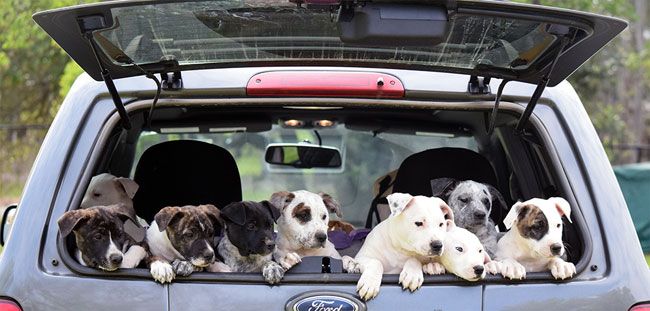Wow, the world has changed so much in such a short time. This occurs to me several times a day, but today’s biggest shock was a blog post written by Julie Levy, DVM, PhD, DACVIM, DABVP, Fran Marino Endowed Professor of Shelter Medicine Education, Maddie’s Shelter Medicine Program, University of Florida – in other words, a highly educated, passionate proponent of spay/neuter practices, especially in shelter medicine. Dr. Levy’s shocking post? A plea for shelter and rescue programs to suspend spay/neuter surgeries temporarily in order to support “safer at home” practices, slowing the spread of COVID-19.
It takes a village
While all operations of an animal shelter require workers to show up to care for the animals, surgery, in particular, brings people together in very close quarters. Of course, sterile conditions are maintained during surgery. But I’ve been behind the scenes at both veterinary clinics and shelters when they were doing back-to-back spay/neuter surgeries. There is a small army of people working in support of the veterinarian who performs the surgeries: people bathing animals, taking their temperatures, inducing sedation, shaving them, helping intubate and secure them on the surgery table, monitoring the anesthesia equipment, moving “packs” of sterilized surgical tools through the process (delivering clean packs to the vet, taking away used instruments, readying the used instruments for sterilization), providing the sort of routine husbandry tasks that are immensely easier when the patient is still sedated (ear cleaning, nail-trimming, expressing anal glands), monitoring the animals after surgery and helping them “wake up” safely. Social distancing is impossible in this setting – and performing all of these tasks under layers of protective equipment is a lot more challenging in the (perennially) tighter confines of a veterinary surgical suite.
For those of us who volunteer or work closely with shelters or rescues, spay/neuter is a third-rail sort of proposition. There are no stronger proponents of limiting the reproduction of dogs and cats than us – and yes, as a long-time shelter volunteer, I count myself as one of those people. As long as dogs and cats in this country are being euthanized in the hundreds of thousands a year, I will be an avid advocate for limiting the ability of most pets to procreate.
(What about the adverse effects on the health of the altered animals? So glad you asked: In the May issue, we have a major feature looking at the scientific literature regarding the effects of spay/neuter on dogs. Stand by!)
Dr. Levy’s plea to temporarily halt spay/neuter surgery
Dr. Levy is not alone in recommending that shelters and rescues temporarily move forward with adoptions and placing animals in foster homes without first performing spay/neuter surgery; the recommendation is being shared by all the major university shelter-medicine programs in North America: The University of Wisconsin-Madison Shelter Medicine Program, University of Florida Maddie’s Shelter Medicine Program, University of California- Davis Koret Shelter Medicine Program, Cornell Maddie’s Shelter Medicine Program, Humane Canada, The Association for Advancement of Animal Welfare, Association of Shelter Veterinarians, Ontario Shelter Medicine Association and the Association Vétérinaire Québécoise de Médicine de Refuge.
Here’s an excerpt from Dr. Levy’s blog post:
The urgency of this unprecedented pandemic calls for radical action to protect human lives, and as a consequence of that, to protect animal lives. Of utmost importance is to support our healthcare system, which is close to the breaking point, via #SaferAtHome. It is no longer just about our animal welfare missions, but about those brave souls who are literally putting their lives and personal welfare on the line for us. The sacrifices we make in this moment will determine what larger sacrifices will be thrust upon us in the coming weeks and months. It is time to suspend routine spay-neuter.
This will help keep as many people as possible healthy and out of our community hospitals so that life-saving beds are available when needed. This will safeguard our staff so that when this crisis subsides, and it will, we have an intact work force of experts that can go back to work with renewed vigor and tackle the animal needs that we are all highly committed to…
Spay/neuter is a tool of lifesaving, but we are too creative and resourceful to believe we cannot overcome in other ways, kitten season notwithstanding. Pausing spay/neuter is a gut punch, and it will have consequences – kittens will be born, revenue will fall, staff may be furloughed – but these pale in comparison to the alternative.
A “gut punch” – that’s the perfect expression to describe how I felt reading Dr. Levy’s post. Especially since I am currently helping a friend with fostering a litter of 10 puppies for our local shelter – puppies who are at the perfect age for getting placed in homes. The idea of sending those pups away with people who may not manage to get them back to the shelter (at some point in the future, god willing) in time to prevent them from reproducing is anathema to me. And yet, do I want the veterinarian, registered veterinary technicians, and other shelter staff members to risk their health and that of their families in order to prevent this from happening? I do not.

What shelters are doing during this crisis
I’ve been watching the websites and Facebook pages of shelters that I admire to see how they are dealing with the intake and adoption of animals. Most shelters have closed their doors to the public at this time, asking people to call the shelter to discuss surrenders, adoptions, or other needs. The most organized shelters (and those who are best-supported by volunteers in their communities) have sent most or all of their adoptable animals out to foster homes. Most are in the process of setting up online “meet and greet” sessions in support of potential adoptions, reserving the transfer of animals for only the most pre-qualified, committed adopters. I’m trying to help my shelter accomplish this, if only for these pups! (I have to admit to feeling special urgency about puppies; I hate the idea of them spending the most formative weeks of their lives seeing only my friend and me and our dogs; for the best socialization experience they can have in these trying times, I’d so prefer to get them into the hands of their adoptive families as soon as possible.)
Tell me: What are shelters in your area doing with their wards today? Are you helping in any way? If you don’t know what’s happening at your local shelter and have a little time to spare to help, give them a call!







It is a tough choice to make but I have to agree with the Doctor that it is the right decision. There are of course consequences to any action or decision. Stay safe everyone.
I love your blog, I’ve learned many tips, thank you for your time!
My dog has attitude problems and thanks to your blog and this training – bit.ly/dogbraintrainingnow – I was able to learn to deal with this problem!
I hope I can help more people with the same problem!
Thank you!
My dog loves people and a couple of dogs, but isn;t polite at all if she sees other dogs. She pulls and barks and gets out of control. She is a rescue who ;had been found on a freeway and is about 4 years old now. Any suggestions on how I might help her?
In the end, changing the dynamics of pet overpopulation is up to human society, voluntarily working as a team. A team requires trust. We trust others in many aspects of animal care already, whether we’re completely comfortable with that or not, particularly my area of passion, behavior and training. We must all step up, together, to conquer the pandemic. We also must begin trusting that the decades of education we’ve put out about how and why to decrease the populations of pets is having an effect on humans who care about pets. People are capable of preventing dogs and cats from breeding until spay and neuter operations can safely and ethically begin again.
The Wenatchee (WA) Valley Humane Society has closed to the public and most of the dogs and some cats have been placed in foster homes. The mostly younger staff members are caring for the ones still at the shelter. The volunteers, mostly older, were told to obey the stay-at-home rule in our state. With regard to delaying spay/neuter until it is safe to do them, perhaps the shelter could come up with some kind of reward for adopters who bring their animals back for the surgery once this crisis is over. Don’t have any idea what kind of reward right now, but creative thinkers should be able to come up with something.
I am on the board of a spay/neuter clinic and we closed down operations on March 25. It was a hard decision and we were not happy about it but we had to consider the health of our employees and their families.
I think the programs should continue. You are already covered from head to toe in protective gear…or should be. Hopefully not taking steps backwards. We’ve come so far in the protection and safety of animals. We should continue on…but not forcibly to those involved.
I understand and support limiting the indiscriminate reproduction of our pets. However, as a professional trainer, I have been shocked and appalled by the practice of so many rescues that spay/neuter puppies as young as 7 (yes, seven!) weeks of age. This is so incredibly irresponsible and wrong-headed. More and more evidence is piling up that even the automatic de-sexing 6 months is harmful – especially for some breeds and larger size dogs. But it is NEVER acceptable to to this to puppies under 6 months of age.
If you have puppies that are within the sensitive socialization period (4-16 weeks) they are too young to be spayed/neutered. Period.
Totally agree, Scott! I always wince when they talk about all puppies being s/n before placement. Not even sure why this is a mantra in this country as there are European countries industrialized nations where no animals are s/n unless medically necessary and they don’t seem to be overrun with shelter animals.